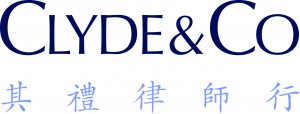16 December, 2017
Parents want the best education for their children, and those in the nations of Southeast Asia (ASEAN) are no different. With the unprecedented economic and population growth seen in ASEAN, where GDP has increased over tenfold since 1970 and urban populations an astonishing 1000 per cent since 1950, educational options for parents have exploded. In fact, current private education spend in ASEAN is approaching the 60 USD billion benchmark, which, though a seemingly impressive figure, amounts to only a fraction of the corresponding spend of North America and is roughly equivalent to the spend of the Middle East, regions less populous than ASEAN. As these macro-trends in ASEAN continue, parents have more options for their children, which is widely expected to result in ASEAN private education spend catching up to and potentially surpassing its more established regional counterparts in the very near future.
Foreign investors are aware of this opportunity, and for those who are not, it's not too late! But before putting hard money down, any investor must understand the regulatory environment for private education in ASEAN and importantly, as ASEAN further integrates, the direction it is heading. In this respect, it is important to look at the regulatory framework of Singapore and Malaysia, markets where private education has enjoyed early success. By doing so, one can understand how these frameworks are likely to serve as harbingers for other bankable, but relatively untapped private education markets, such as Indonesia, Philippines and Vietnam.
The Singapore Framework
Synonymous with world class education, Singapore is the regional leader in creating the regulatory framework to welcome and accommodate foreign investment in private education. Singapore allows for 100% foreign ownership and for-profit education, and subject to very minimal limitations, 100% profit repatriation.
Furthermore, fee regulations on primary and secondary education do not exist. A centralised and efficient Committee for Private Education, an independent council/committee established under the Ministry of Education to oversee private education, allows investors to avoid many of the bureaucratic headaches that accompany private education investments in more frontier jurisdictions. Similarly, the Higher Education Policy Division, implemented to oversee the provision of tertiary and technical education, as well as the registration of private schools in Singapore, provides investors responsive and similar guidance when needed.
All however, is not rosy. Constant legal changes in this sophisticated jurisdiction, such as a recent regulation to place a Singapore Dollars 100,000 floor on minimum paid up capital for private education institutions, meeting a minimum credit rating, and obtaining a EduTrust certification for quality assurance means that foreign investors must at all times be on their toes to the current legal landscape. Furthermore, enrolment of locals in international schools often requires consent of the Ministry of Education.
The Malaysia Framework
Like Singapore, Malaysia offers a pro-foreign friendly investment environment, though not quite yet on par with Singapore. Malaysia allows for-profit education and subject to minimal limitations again, 100% profit repatriation. Locals are also generally allowed to enrol in international schools. Unlike Singapore, regulations on primary and secondary education do exist.
Generally, 100% foreign ownership in private education is allowed, though this often depends upon the curriculum being taught. Use of the national curriculum, whether alone or in a hybrid with foreign curriculum, may limit the amount of foreign equity injection (if at all allowed in the first place). Such uncertainty embodies one of the trickier issues for investors in Malaysia: private education is highly regulated and lacking in clarity although regulatory exceptions are available, with approval of the Ministry of Higher Education. Investors therefore are recommended to always seek administrative guidance when any uncertainty exists, especially in respect to higher education institutions, which recently have been placed under greater scrutiny and subject to fines for non-compliance.
Emerging Markets and the Framework to Come
Recent studies indicate that 5 of the 25 world's largest economies in 2050 will be from ASEAN, with Indonesia, Philippines and Vietnam leading the charge. But as of now, foreign investment in ASEAN private education, outside of Singapore and Malaysia, has been relatively limited. This is due in large part to the many hurdles on foreign investment in ASEAN's more frontier jurisdictions. For example, in Indonesia, ASEAN's largest education market, for-profit education is prohibited; in Philippines, foreign ownership is limited to 40%. While these type of restrictions are worrisome, they are characteristic of maturing education markets.
There is hope. In Vietnam the Ministry of Education and Training recently issued Decree 73 to lift caps on locals allowed at international schools and the requirement that foreign investors build their own facilities prior to recruiting students. Such developments in Vietnam undoubtedly have been undertaken to prevent the exodus of talent to private education institutes in Singapore, Malaysia and abroad. Therefore there are grounds for optimism, for opportunistic investors and empty nest parents alike, that further regulatory liberalisation of the private education sector in ASEAN is to come.
For further information, please contact:
Thomas Choo, Clyde & Co
thomas.choo@clydeco.com





